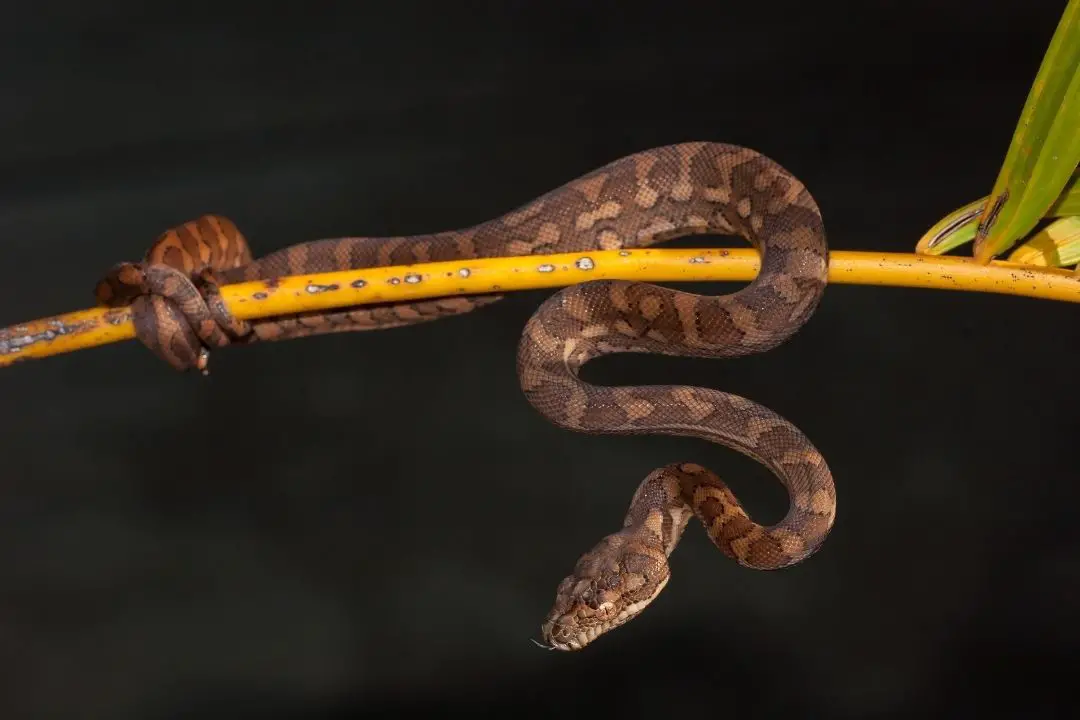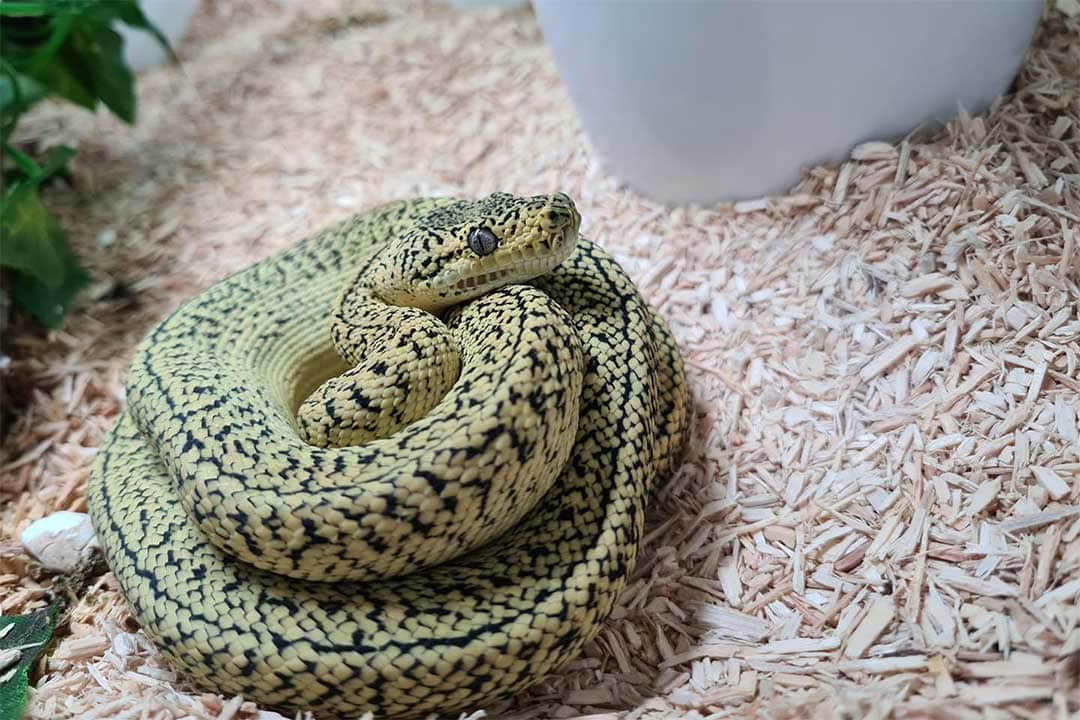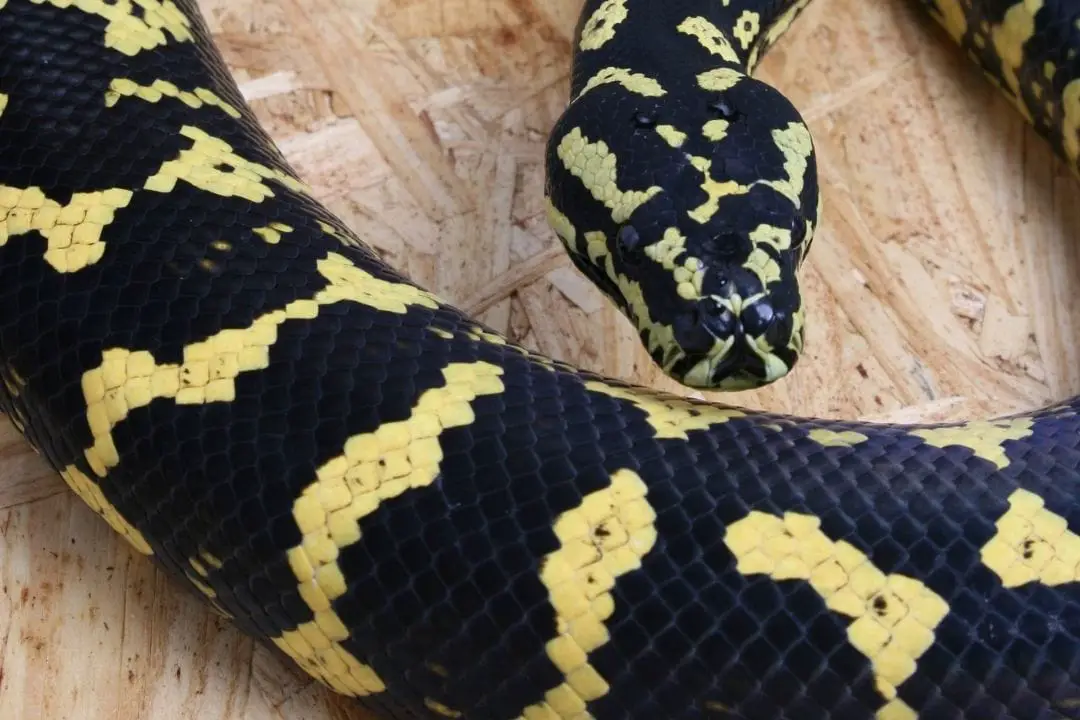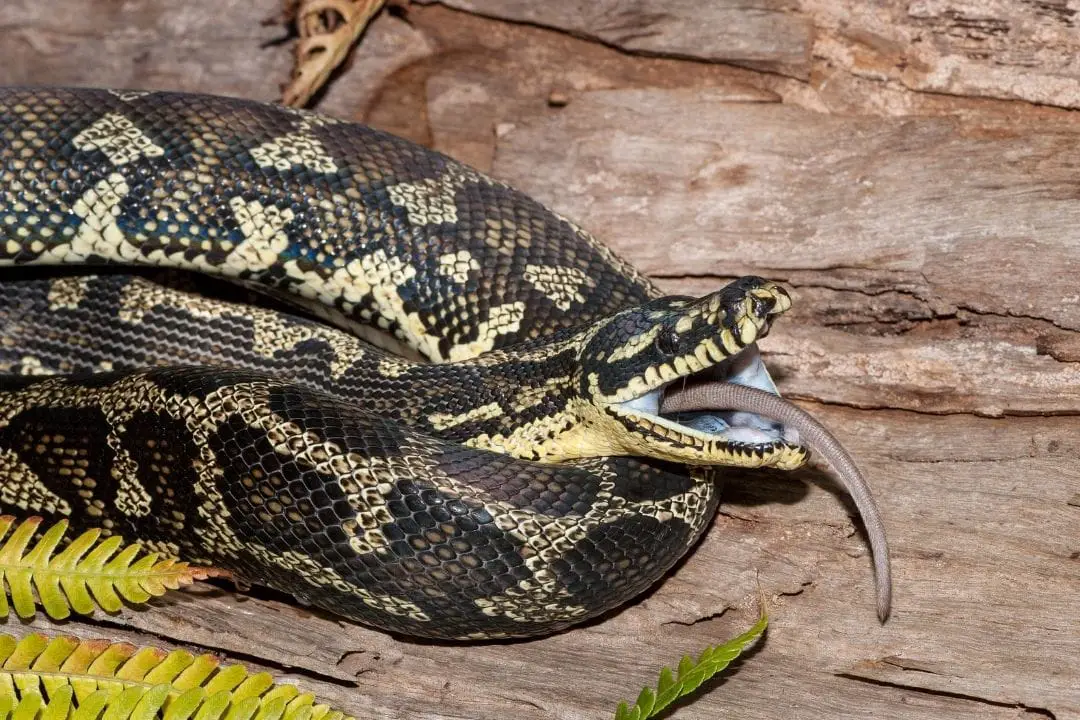Carpet pythons (Morelia spilota) are a species of snake native to Australia and neighboring portions of Oceania. 6 subspecies live across the continent and in Papua New Guinea.
These are fascinating animals, so here are some fun facts about these snakes!
1. Carpet Pythons are Very Diverse
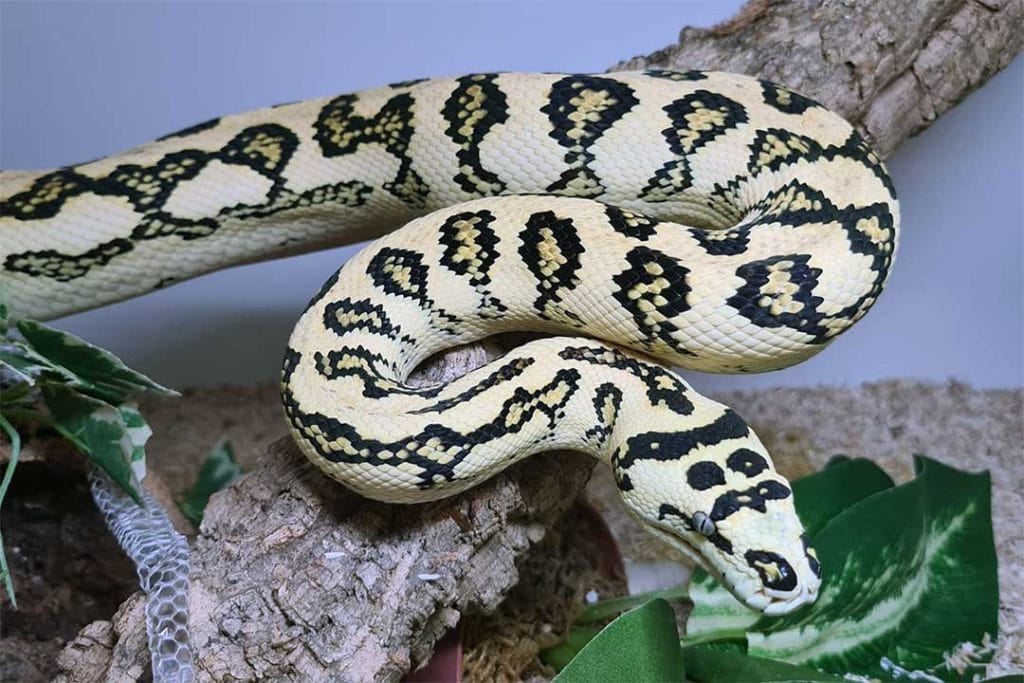
Carpet pythons are not only the most widespread of the Australian pythons, but they are also the most diverse. They live in habitats ranging from forests to coastlines, and desert biomes.
The carpet pythons that live in these areas are all separate subspecies and have a large difference in colors. They can grow to different sizes and have different habits and needs.
They will also typically choose different areas to lay their eggs. A desert-dwelling animal will use an abandoned animal burrow, while a forest-dwelling animal may use a hollow in a tree.
2. Carpet Pythons Practice Maternal Care
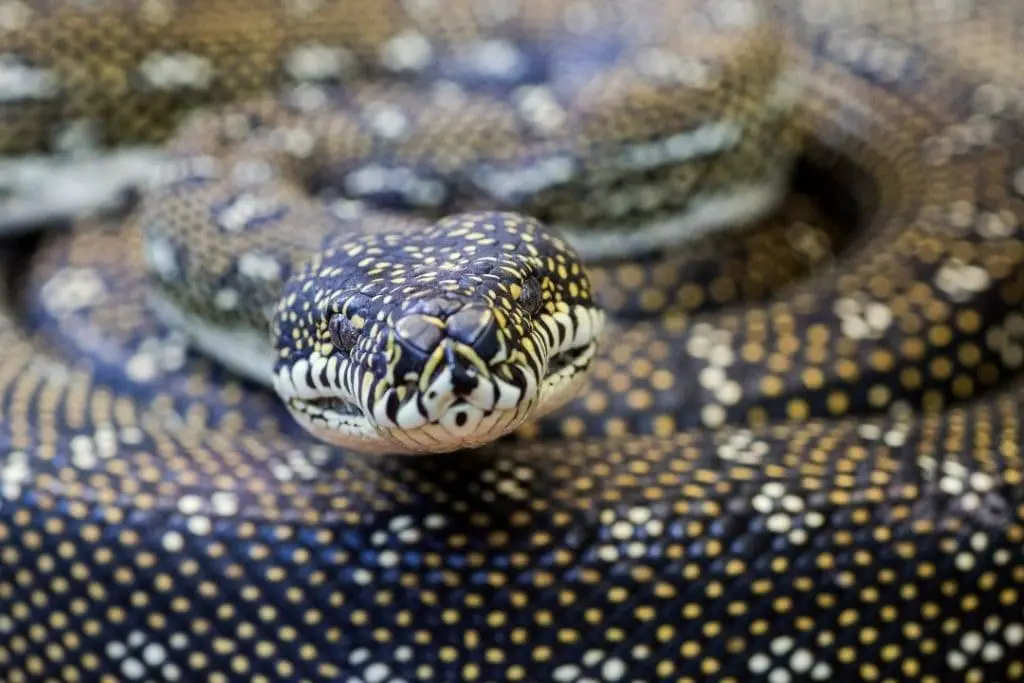
The vast majority of snake species will lay their eggs and leave them immediately. The boas which give live birth will not care for their newborns.
Carpet pythons and all pythons practice maternal care. The female will lay her eggs in her chosen nest and curl around them. She will typically not leave her eggs, even for a meal.
Carpet pythons will shiver to raise the temperature and help hatch her eggs. This may influence the sex of the hatchlings, but this isn’t entirely certain since it has been proven that some pythons have XY chromosomes.
Either way, carpet pythons do care for their eggs by maintaining the temperature and humidity to help ensure healthier hatchlings.
Once the eggs are hatched, the mother’s job is over and she will resume her normal behavior.
3. Carpet Pythons have Two Lungs
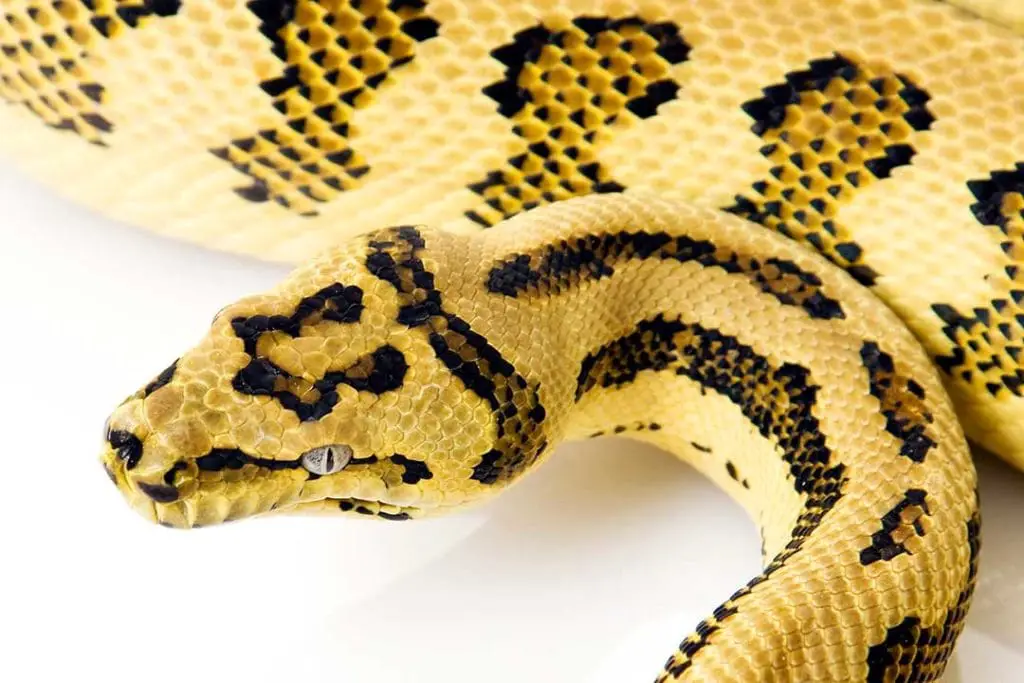
This fact may not seem very unique until you know what sets primitive snakes like pythons apart from other snakes. The so-called modern snakes only have one functioning lung, typically the one on the right side.
Pythons like carpet pythons have two lungs. These snakes also retain other features, such as small spurs on either side of the cloaca.
These are remnants of the hind limbs. Male carpet pythons use these to assist with mating. While it isn’t visible, carpet pythons also retain the pelvic girdles that most other species of snake have lost over time.
4. Carpet Pythons are Nocturnal
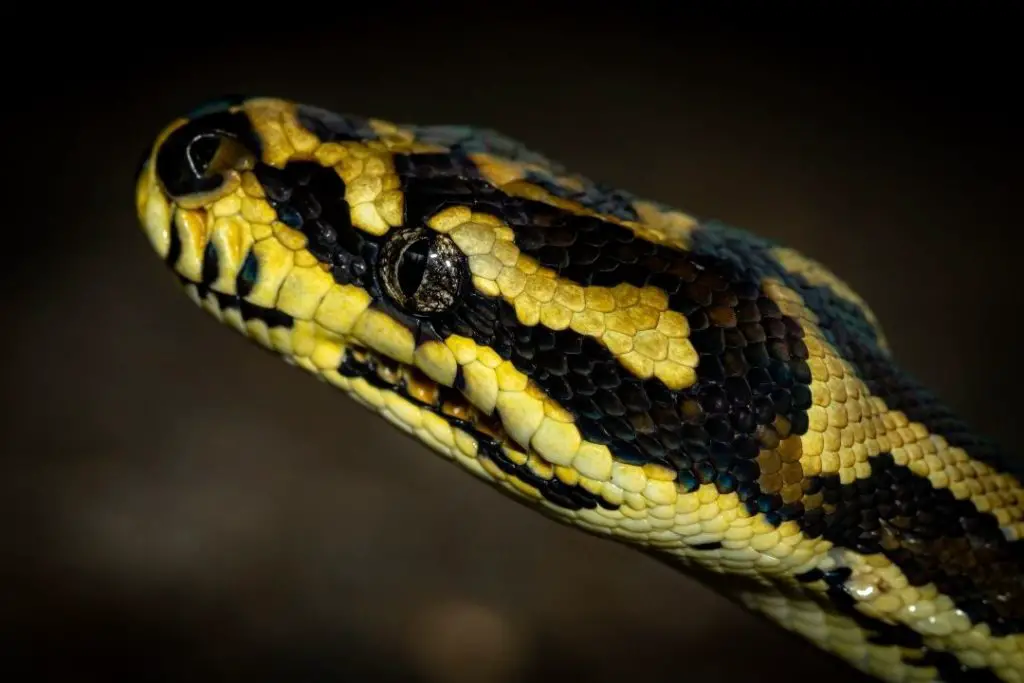
Carpet pythons are nocturnal animals. Even in captivity, they will be active mainly at night. They predate on rodents and other small animals that are typically active at night.
These snakes will pick a spot and wait for prey to come by. They can find common paths for prey animals thanks to a very powerful sense of smell.
In captivity, it is a good idea to try feeding these snakes only in the evening. While they are very good feeders, this mimics natural behavior more closely and matches when a carpet python is naturally hungry.
You should avoid handling carpet pythons at night, since they may mistake your hand for a tasty meal more easily.
5. Some Subspecies are Under Threat
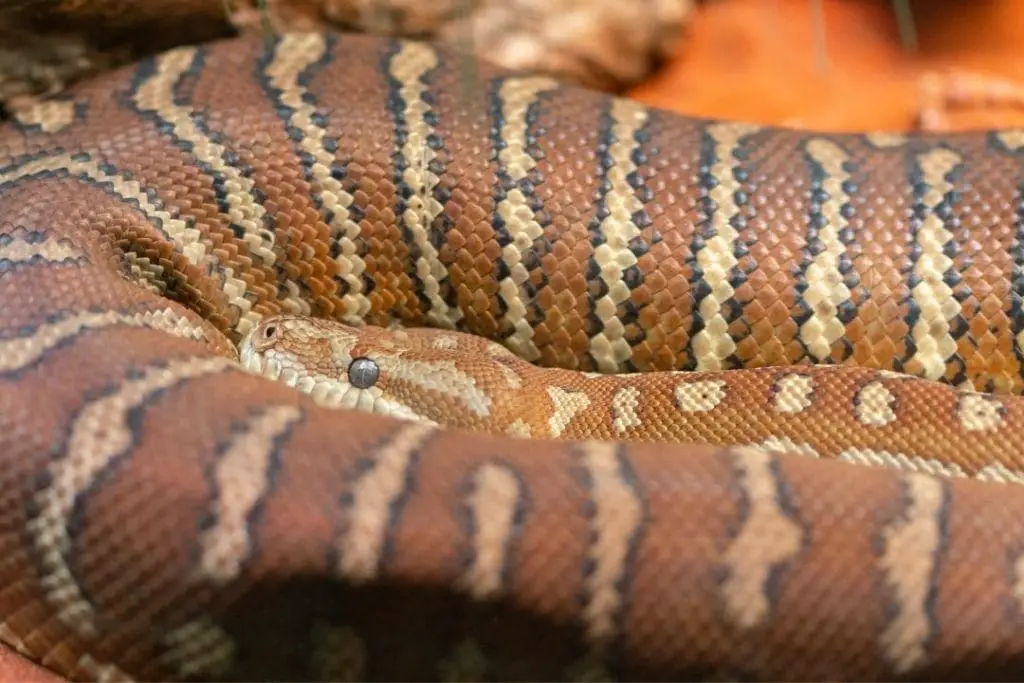
While the IUCN currently lists carpet pythons as a species of least concern, it does note that wild populations are dropping. The carpet python subspecies native to south-western Australia (M. s. imbricata) are notably threatened in the wild.
This is caused by many factors, including habitat loss. The increasing number of fires in their native range has reduced the nesting and resting sites that these snakes will return to year after year.
Increasingly intense fires are burning these sites and typical hiding places like thickets are not growing back as they should. This means that this subspecies is likely at high risk from further habitat loss to human activity and the pet trade.
Given that most snakes also suffer predation by non-native predators like dogs and cats, this can seriously impact their survivability in their native range.
While other subspecies aren’t covered by this study, watching out for these snakes is important. Many pythons are willing to share their habitat with humans.
They will enter or hang around human dwellings or structures such as houses and barns looking for rodents. This can put the snake at risk if a human who feels it is a threat comes across it.
Since these snakes can be very long, they are more at risk of being considered a threat and killed. Many subspecies also share a range with venomous snakes that are dangerous to humans, so they are also at risk of mistaken identity.
6. Captive-Bred Carpet Pythons Come in Beautiful Colors
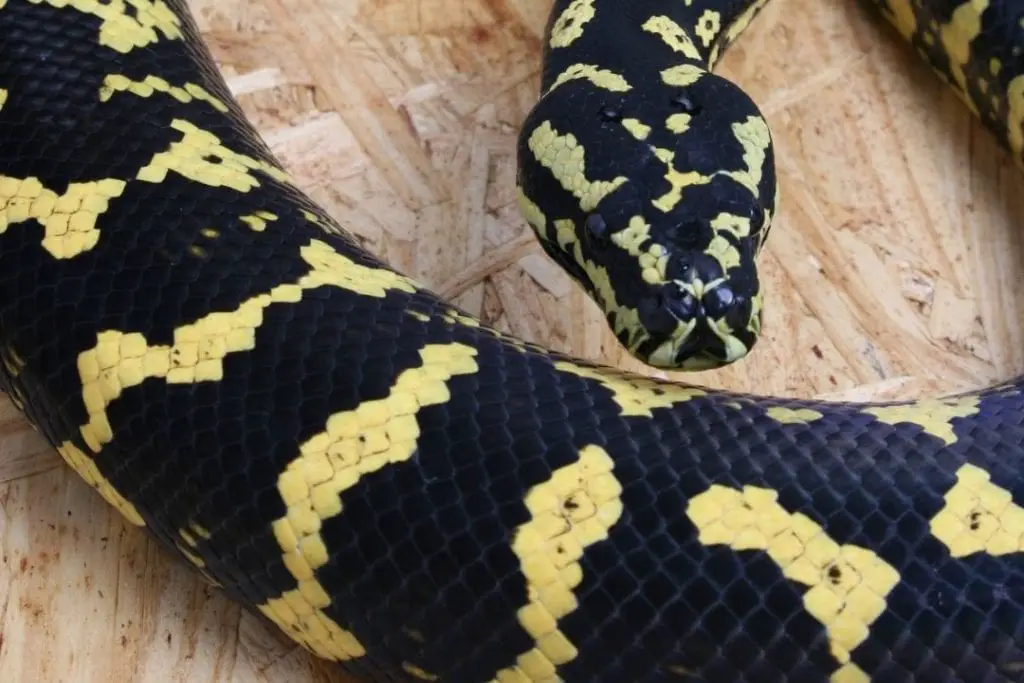
Thanks to selective breeding, you can find carpet pythons in many amazing colors and patterns. These are typically called morphs.
You can find changes to typical patterns or pigments that result in some stunning animals.
For instance, axanthic animals can have a gray-toned look that many owners adore. It is worth keeping an eye on breeders if you want a snake that doesn’t have a wild-type look.
Just be sure you know how large the snake may end up by asking the breeder. Make sure you know what you are getting into if you want to keep one of these, I have a complete carpet python care sheet on this website.
7. Some Morphs have Health Problems
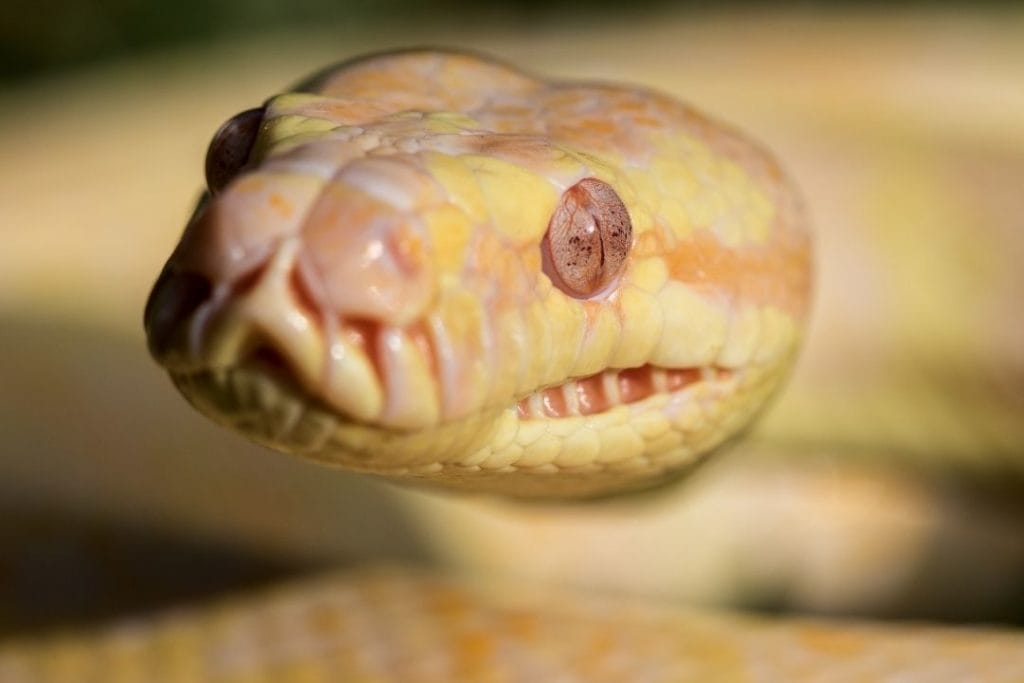
While you can enjoy some amazing looks in your carpet python, be sure to make sure the gene that causes the unique color or pattern doesn’t have any health effects.
For instance, the gene that is referred to as jaguar causes a neurological issue. This can cause disorientation and a wobbly movement.
It can be worsened by stress or during exciting events like feeding. Some animals are more severely affected than others, so be sure to ask the breeder if you want one of these snakes.
Conclusion
Carpet pythons are incredible snakes with a great deal of variety across the subspecies. If you have any facts about these snakes, be sure to share them in the comments below.
